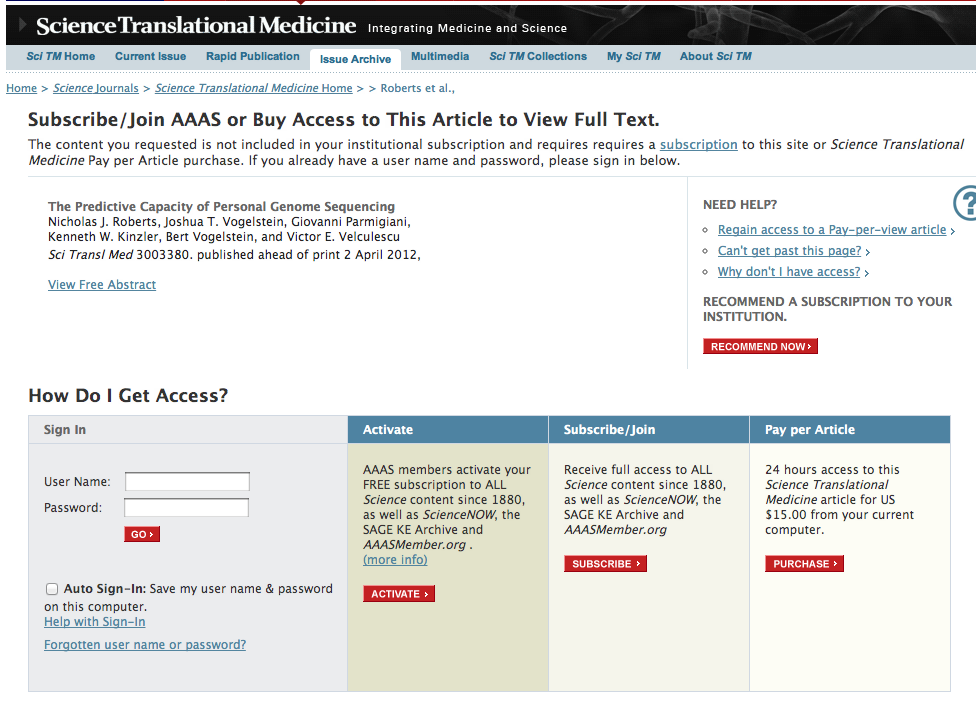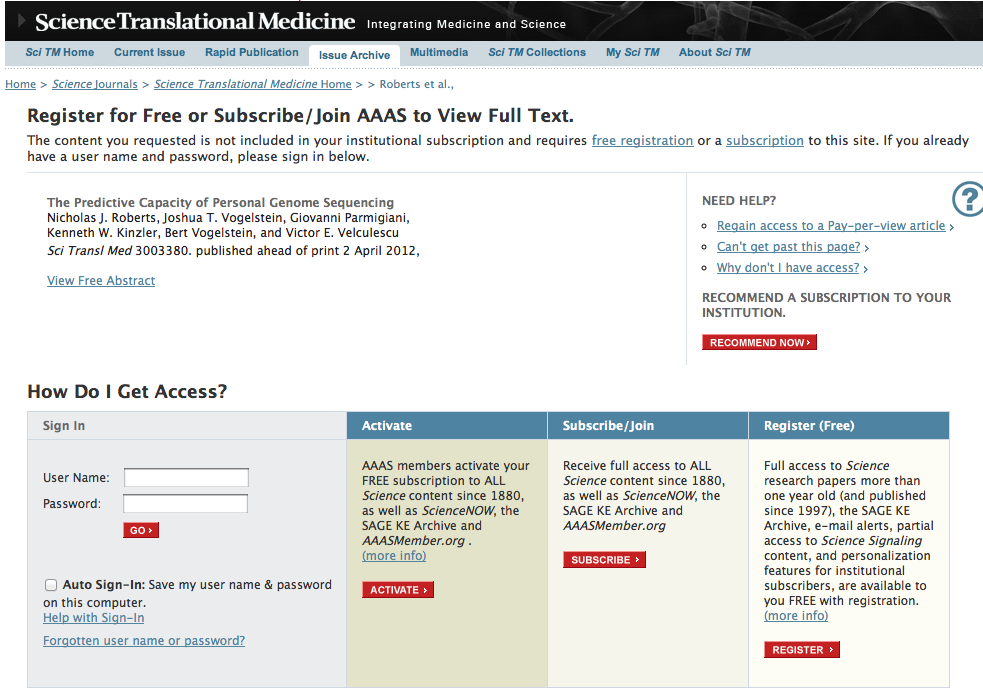There’s been a lot of media coverage of and discussion about a recent paper from Bert Vogelstein and Victor Velvulescu about the utility of whole-genome sequencing to predict disease. Using previously published data on disease occurrence in identical twins, and a relatively simple mathematical model, the authors conclude that not only isn’t sequencing very useful for predicting disease occurrence now, it will never be.
It’s a provocative claim, and the paper was aggressively press-released. Vogelstein even held a press conference at a major cancer meeting to discuss it. And the media clearly loved the iconoclastic spin, giving the work a lot of exposure that largely parrots the authors’ anti-personal genome sequencing message.
From a strictly scientific standpoint, the paper does not deserve so much attention. It presents no new data, and its conclusions are not novel (Erick Check Hayden has a nice blog post about objections to the paper itself). If the work has any value, it is in framing the issues around the value of personal genome sequencing in a useful way for a non-technical audience.
The authors seem to recognize this. Not only have they sought popular press coverage of their work, but they led off their discussion in the paper with thoughts about the impact of their findings on public perceptions:
The general public does not appear to be aware that, despite their very similar height and appearance, monozygotic twins in general do not always develop or die from the same maladies . This basic observation, that monozygotic twins of a pair are not always afflicted by the same maladies, combined with extensive epidemiologic studies of twins and statistical modeling, allows us to estimate upper- and lower- bounds of the predictive value of whole-genome sequencing.
It is thus the height of irony that the actual paper is effectively not available to the public. Indeed, even with all the privileges of my affiliation with one of the largest research universities in the world (UC Berkeley), I could only read the abstract, and was instead offered “24 hours access to this Science Translational Medicine article for US $15.00″.
It is a shame that the authors who so clearly want their work to impact the public chose to publish it in a journal that even many of their colleagues – let alone the public – can not access. Prominent scientists like this should never let this happen – particularly when they view the public as part of their audience and they have a written a paper that likely would engage the public if they could read it.
But I reserve most of my disdain for the publisher – the non-profit American Association for the Advancement of Science, the world’s largest general scientific society. The AAAS talks a good game about the importance of engaging the public in scientific discourse, but they evidently don’t care about extending this engagement beyond the shallow platitudes of press releases.
I am sure the AAAS realize that the many in the public are actually interested in learning more about the details behind science stories they read about in the popular press. But rather than view this interest as a great opportunity for public engagement, the AAAS seems to view it as nothing more than an opportunity to make a quick buck.
————————————————————————————————–
The citation to the paper is:
And here is the PDF for those of you who don’t have friends who can access it and email you a copy.
————————————————————————————————–
[UPDATE: AAAS has changed the access rules for this paper, making it available for free to registered users.]
[UPDATE II: Since someone questioned my original statement that the article was not available to me through UC Berkeley, I am posting a screenshot I took this morning of the landing page for the full text of this paper followed by what it looks like now, both taken from within the Berkeley network, showing the original $15 pay for 24 hour access, and the new free access with registration]


7 Comments